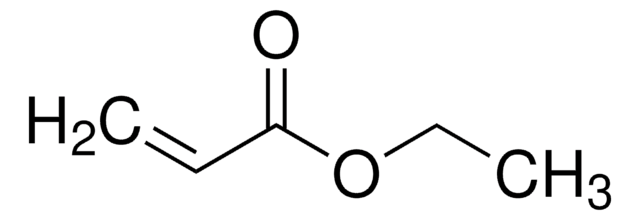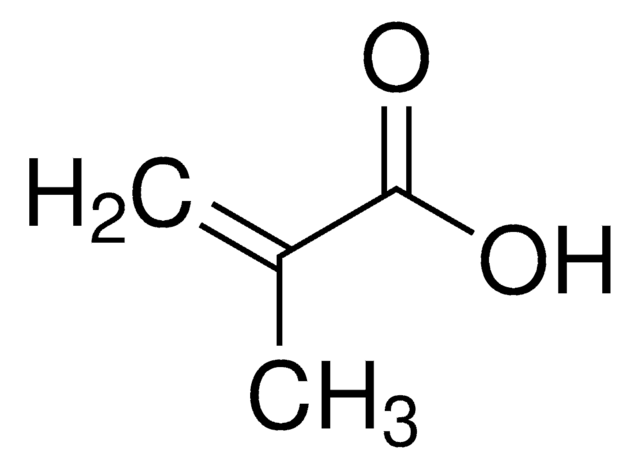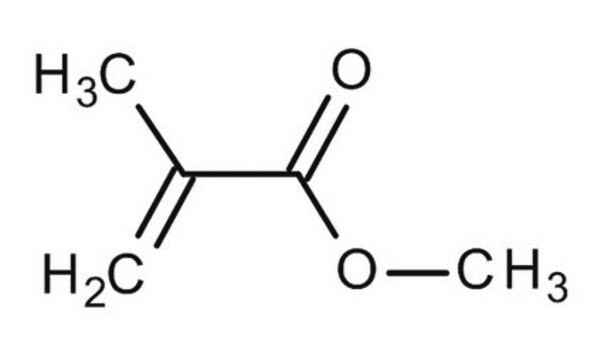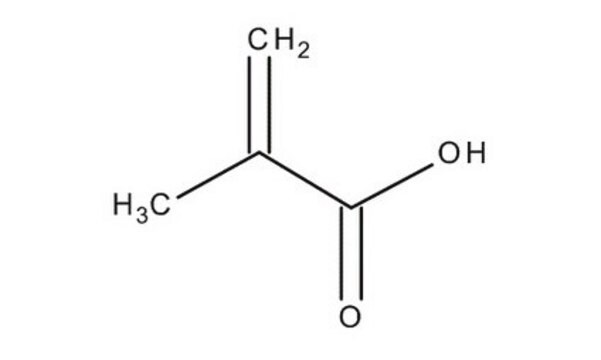W241811
Ethyl acrylate
≥99.5%, stabilized
Sinônimo(s):
Acrylic acid ethyl ester, Ethyl 2-propenoate
About This Item
Produtos recomendados
fonte biológica
synthetic
Nível de qualidade
grau
Kosher
conformidade reg.
FDA 21 CFR 117
densidade de vapor
3.5 (vs air)
pressão de vapor
31 mmHg ( 20 °C)
Ensaio
≥99.5%
Formulário
liquid
temperatura de autoignição
721 °F
contém
10-30 ppm MEHQ as stabilizer (synthetic)
Lim. expl.
12.1 %
índice de refração
n20/D 1.406 (lit.)
p.e.
99 °C (lit.)
pf
−71 °C (lit.)
densidade
0.918 g/mL at 25 °C (lit.)
aplicação(ões)
flavors and fragrances
Documentação
see Safety & Documentation for available documents
alérgeno alimentar
no known allergens
Organoléptico
plastic
cadeia de caracteres SMILES
CCOC(=O)C=C
InChI
1S/C5H8O2/c1-3-5(6)7-4-2/h3H,1,4H2,2H3
chave InChI
JIGUQPWFLRLWPJ-UHFFFAOYSA-N
Procurando produtos similares? Visita Guia de comparação de produtos
Descrição geral
Aplicação
- Refractive index adjustable intraocular lens design to achieve diopter control for improving the treatment of ametropia after cataract surgery.: This study involves the use of ethyl acrylate in developing intraocular lenses with adjustable refractive indices, which aims to improve visual outcomes in patients undergoing cataract surgery by providing customizable diopter control (Hong et al., 2024).
Exoneração de responsabilidade
Palavra indicadora
Danger
Frases de perigo
Declarações de precaução
Classificações de perigo
Acute Tox. 3 Inhalation - Acute Tox. 4 Dermal - Acute Tox. 4 Oral - Aquatic Chronic 3 - Eye Irrit. 2 - Flam. Liq. 2 - Skin Irrit. 2 - Skin Sens. 1 - STOT SE 3
Órgãos-alvo
Respiratory system
Código de classe de armazenamento
3 - Flammable liquids
Classe de risco de água (WGK)
WGK 2
Ponto de fulgor (°F)
48.2 °F - closed cup
Ponto de fulgor (°C)
9 °C - closed cup
Escolha uma das versões mais recentes:
Já possui este produto?
Encontre a documentação dos produtos que você adquiriu recentemente na biblioteca de documentos.
Os clientes também visualizaram
Nossa equipe de cientistas tem experiência em todas as áreas de pesquisa, incluindo Life Sciences, ciência de materiais, síntese química, cromatografia, química analítica e muitas outras.
Entre em contato com a assistência técnica










